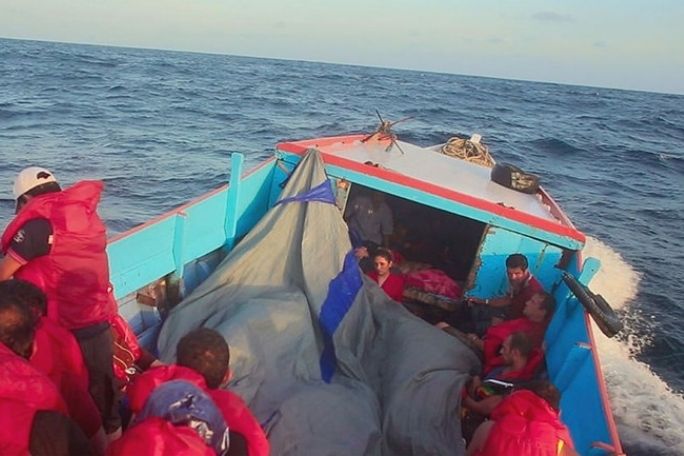Lesson summary
Students are introduced to key terminology and language encountered when studying or reading about the topic of refugees and people seeking asylum. They enhance their understanding of the power of language through investigating the similarities and differences between concepts and terms and apply this knowledge by constructing their own definitions.
Learning intentions:
Students will...
- understand the importance of language choices when discussing and studying complex issues.
- understand and be able to communicate the meaning of key terminology and concepts related to asylum seeking and refugees in the 21st Century.
Lesson guides and printables
Lesson details
Curriculum mapping
Australian curriculum content descriptions
Year 10 English:
- Understand how language use can have inclusive and exclusive social effects, and can empower or disempower people (ACELA1564)
- Refine vocabulary choices to discriminate between shades of meaning, with deliberate attention to the effect on audiences (ACELA1571)
Syllabus outcomes: EN5-5C, EN5-3B.
General Capabilities: Literacy, Personal and Social Capability, Ethical Understanding, Intercultural Understanding.
Cross-curriculum priority:
Relevant parts of Year 10 English achievement standards: Students listen for ways features within texts can be manipulated to achieve particular effects and show how the selection of language features can achieve precision and stylistic effect.
Unit of work: Stories of Chasing Asylum – access the unit overview here.
Time required: 120 minutes.
Level of teacher scaffolding: High – facilitate class discussion and assess student work.
Resources required
- Student Worksheet – one copy per student OR computers/tablets to access the online worksheet
- Device capable of audio/visual presentation to present a website to the class
- Flashcard definitions of key concepts and terminology
- Five double-sided printed copies of the Frayer Model for each student
- One copy of the Flashcards to display in the classroom
Skills
This lesson is designed to build students’ competencies in the following skills:
- Empathy
- Communication
- Ethical understanding
- Cultural understanding
- Global citizenship
- Social Skills
Additional info
Chasing Asylum exposes the real impact of Australia’s offshore detention policies through the personal accounts of people seeking asylum and whistleblowers who tried to work within the system. To watch the documentary, stream it on Kanopy and Clickview or purchase the DVD at the ATOM Education Shop.


Welcome back!
Don't have an account yet?
Log in with:
By signing up to Cool.org you consent and agree to Cool's privacy policy to
store, manage and process your personal information. To read more, please see
our privacy policy here(Opens in new tab).
Create your free Cool.org account.
Many of our resources are free, with an option to upgrade to Cool+ for premium content.
Already have an account?
Sign up with:
By signing up to Cool.org you consent and agree to Cool's privacy policy to
store, manage and process your personal information. To read more, please see
our privacy policy here(Opens in new tab).